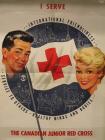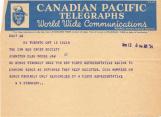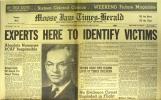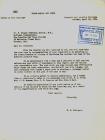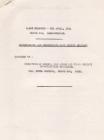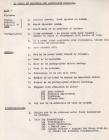1
Immediately following the tragedy, Moose Jaw officials of the Canadian Red Cross Society offered assistance to all local civic officers and families directly affected by the disaster.3
After the collision, the Canadian Red Cross Society executed such diverse tasks as offering coffee to Airmen standing guard at the disaster scene, acting as a contact centre for families of those on the TCA flight, and providing the official headquarters for all information relevant to the identification of victims.5
The forensic's team, which was chaired by Coroner, Dr. J. M. Hourigan, immediately began to identify the bodies. This team sought to co-ordinate all civic services to aid in identifying the victims.All information became important in the identification of the victims. Standard identification techniques like the use of fingerprints and unusual marks such as scars or tattoos were used. However, many of the bodies had been severely damaged. Therefore, items such as ring inscriptions, laundry tags, papers with names and addresses became important in the identification of the remains.
7
Identifying some of the victims proved to be an arduous task. By April 9, it was already apparent that the Moose Jaw forensic team would not be able to discover the identity of a small handful of the victims. At the request of the National Commissioner of the Red Cross Society, one of Canada's most renowned forensic experts, Dr. T. C. Brown, was called to Moose Jaw. He had worked identifying the 199 badly-burned victims of the S.S. Noronic fire at the Toronto docks on September 17, 1949. He arrived in the city on Saturday, April 10th.Following his arrival, Dr. Brown shared his expertise with the Moose Jaw forensic team
consisting of representatives from the Moose Jaw Police Department, the medical community,
the Red Cross Society, and Trans-Canada Air Lines.
